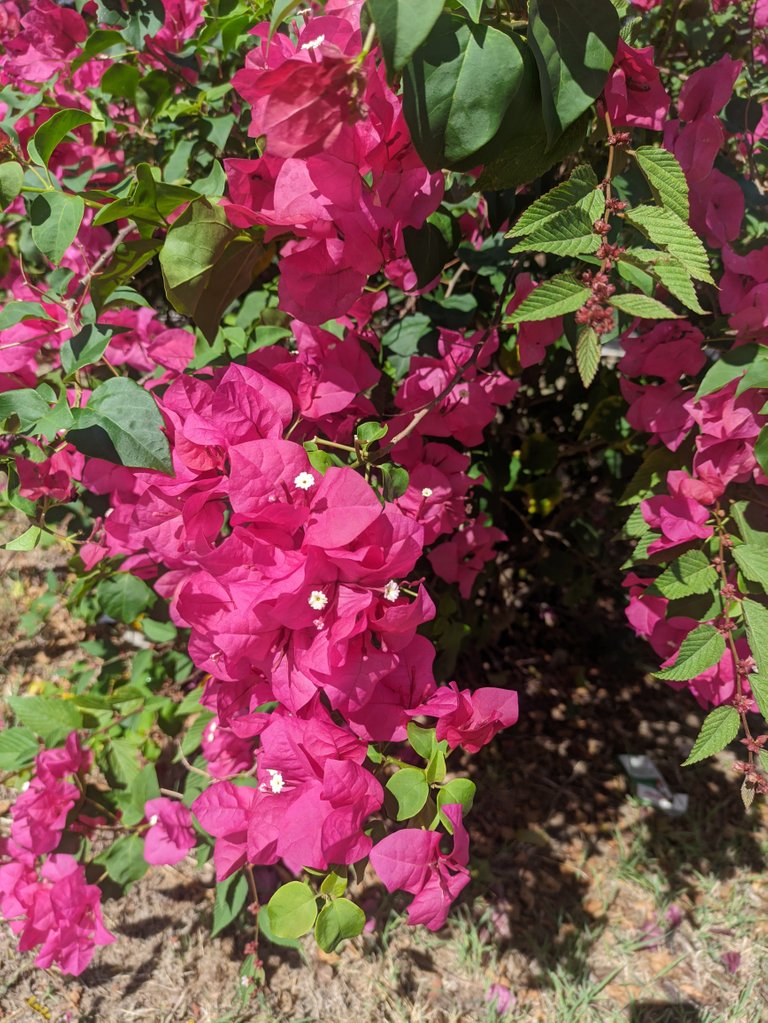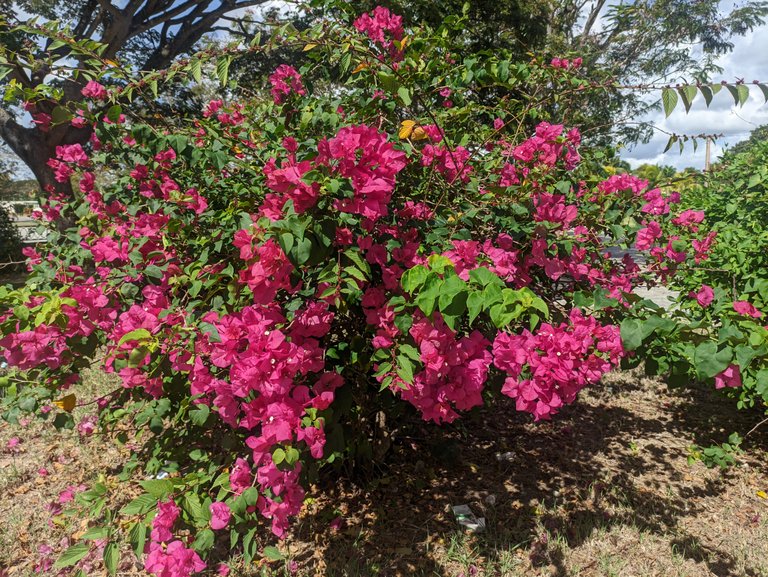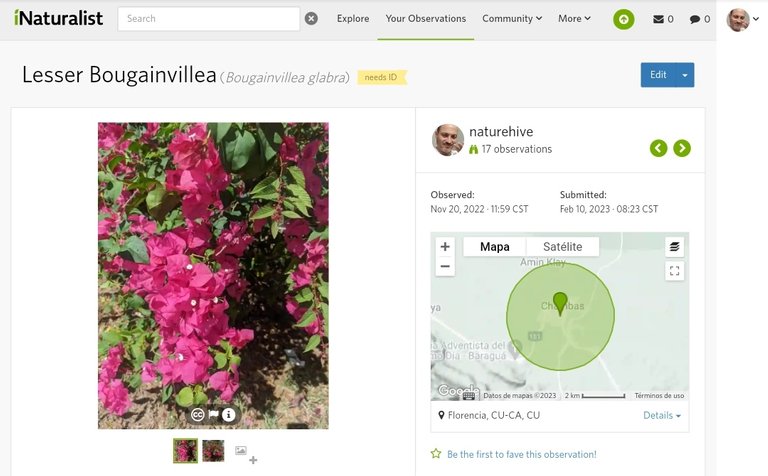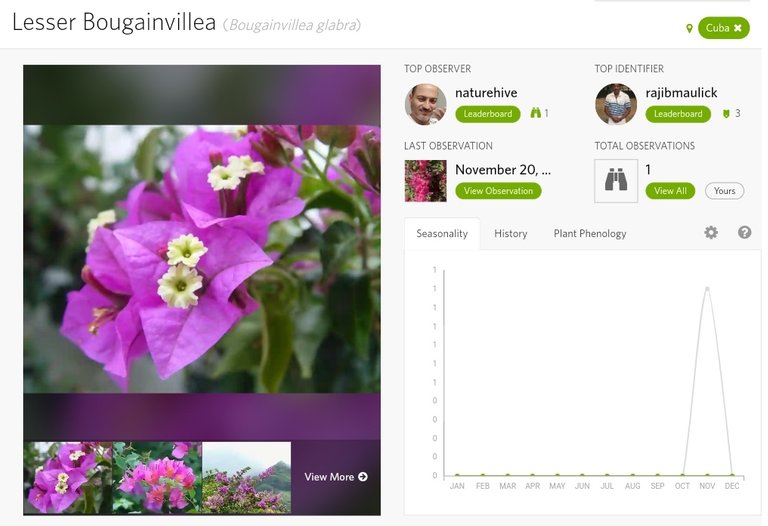| Latin name | Observation date | Location |
|---|---|---|
| Bougainvillea glabra | Nov 20, 2022 | Cuba |


| Link to original community |
|---|
| https://www.inaturalist.org/observations/148445931 |
| Latitude | Longitude | Map |
|---|---|---|
| 22.19326 | - 78.912929 | https://www.openstreetmap.org/?mlat=22.19326&mlon=-78.912929#map=12/22.1931/-78.9129 |


[ENGLISH - ESPAÑOL]
[ENGLISH] Bougainvillea glabra, the lesser bougainvillea or paperflower, is the most common species of bougainvillea used for bonsai. The epithet 'glabra' comes from Latin and means "bald".
It is an evergreen, climbing shrub with thick, thorny stems and drooping branches that are glabrous or sparsely hairy. The leaves have a 3–10-millimetre-long (1⁄8–3⁄8 in) stem. The leaf blade is ovate to ovate-lanceolate, pointed or briefly pointed, 5 to 13 centimeters long and 3 to 6 centimeters wide, sparsely fluffy hairy on the underside and bald on the top. The leaf-like bracts are purple, oblong or elliptical, pointed, 65–90 mm (2+1⁄2–3+1⁄2 in) long and about 50 mm (2 in) wide. They tower over the flowers. These grow individually in pairs or in groups of three on flower stems about 3.5 millimeters long.
The crown tube is greenish, clearly angled, about 2 centimeters long, sparsely downy hairy, ribbed and points away from the flower stalk. The tip is lobed five times and forms a short, spread, white or yellowish hem. The six to eight stamens have 8 to 13 millimeter long stamens. The ovary is about 2 millimeters long, the stylus 1 millimeter and the scar 2.5 millimeters.
B. glabra is heat and drought tolerant and frost sensitive. It is easily propagated by cuttings. It needs full sunlight, warm weather and well drained soil to flower well. The species is often used in culture, in areas with frost in glass houses, otherwise outdoors. The similar Bougainvillea spectabilis, which differs from Bougainvillea glabra by the velvety-felty underside of the leaves, is also cultivated, but less frequently.
Being of medical importance, the infusion of the plant's tender leaves and bracts is used orally to treat gastrointestinal problems (diarrhoea, stomach pain), and respiratory conditions (asthma, bronchitis, catarrh, chest pain, fever, pneumonia, whooping cough)
👇👇
[ESPAÑOL] Flor de papel, Santa Rita, (Bougainvillea glabra), o buganvillea menor, es una especie botánica de planta trepadora de la familia de las Nyctaginaceae; y es la más común de las especies para bonsái. Es nativa de Brasil.
Tiene hojas verdes brillantes, ligeramente pilosas o glabras, y de brácteas color magenta, las hojas caducifolias (hojas caedizas). Es una planta perenne, trepadora, leñosa, que alcanza hasta 10 m de altura. Sus Flores son muy pequeñas, blancas, en grupos con brácteas coloridas papilosas. Se dispone de variedades de sola o doble flor. El tronco leñoso tiende a enroscarse, y las delgadas ramas tienen afiladas espinas y hojas verde oscuras. Es muy buena para setos, arcos, o arbusto en la tierra, y en macetas. Es ideal para bonsái.
Las buganvillas no requieren de sustratos especialmente ricos ni exóticos, sino más bien lo contrario, arraigan en terrenos arcillosos y calcáreos.
Pueden florecer durante todo el año si no heladas, pero alcanzar su máximo esplendor de los meses más calidos del año.
La infusión de las hojas tiernas y brácteas se utiliza oralmente para el tratamiento de afecciones gastrointestinales (diarrea, dolor de estómago) y respiratorias (asma, bronquitis, catarro, dolor de pecho, fiebre, gripe, pulmonía, ronquera, tos y tos ferina). La decocción de las raíces se usa para tratar fiebres y por su efecto purgante.
👇👇


🙋🙋🙋🙋

Camera: Nikon D5000 l Lens: Nikkor AF-S 18-55 mm 1:3.5-5.6 G
Camera: Nikon D5000 l Lens: Nikkor AF-S 55-200 mm 1:4-5.6 G ED
Cámara: Nikon D5000 l Lente: Nikkor AF-S 18-55 mm 1:3.5-5.6 G
Cámara: Nikon D5000 l Lente: Nikkor AF-S 55-200 mm 1:4-5.6 G ED
🪶 All the photos and texts in this post are my authorship.
🪶 Todas las fotos y textos presentes en éste post son de mi autoría.



THANK YOU, BYE
😘